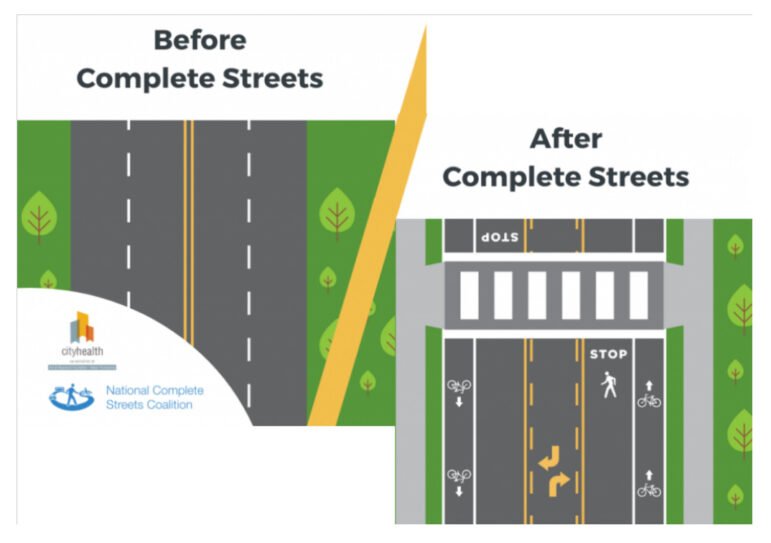From Pedal Greenwich:
You may not have heard of the term “complete streets” before, but we have all been talking for a long time about the need in Greenwich without using that term.
Recently when residents of Shore Road pressured Greenwich to build sidewalks there, they were talking about complete streets.
“Incomplete streets can be downright deadly for those not using a car.”
– Smart Growth America
When the town Department of Public Works proposed a project for “sidewalk connectivity and ADA improvements” all along Route 1 in this year’s town budget, they were thinking about complete streets.
And those of us at Pedal Greenwich who want bike lanes striped along streets that emanate from the new Cohen Eastern Greenwich Civic Center are talking about complete streets as well.

People have been advocating for complete streets in Greenwich for ages, in fact. More than a decade ago, Greenwich completed five studies in five neighborhoods titled “Safe Routes to School.” The studies were focused on making it safe for kids to bike or walk to school. Complete Streets is now what officials call an approach to planning that does that kind of thing. (The studies, by the way, were shelved.)
What makes a street “complete?”
So what is a complete street? The easiest way to think about it is to consider the inverse, incomplete streets. As the advocacy group Smart Growth America explains, “Incomplete streets are the result of a process that fails to consider the needs of all people and outdated measures of what makes a street successful. The end product is a street that spans a spectrum from uncomfortable to downright deadly for those not using a car.”
Residents who decry the new bump outs on Greenwich Avenue at Elm Street are looking to preserve incomplete streets, for example. The project won a major civil engineering award, because it makes the Avenue more convenient and comfortable for everyone. The bump outs reduced crossing time for pedestrians by 40 percent, slowed down speeders, helped people with disabilities, and made it easier for motorists to anticipate where walkers cross and see them too.
But despite the obvious benefits of creating complete streets, Greenwich doesn’t have a complete streets policy in place, so every time a road or street is paved, fixed, or updated, there isn’t a mandate here to make them “complete.”
The Department of Public Works’ deputy commissioner, Jim Michel, recently told the RTM Transportation Committee that for any street project, they “look at all different users of the roads [and ask] is there ways that we can provide extra space along the side of the road.” But he acknowledged, “I can’t go to my file cabinet and pull out a book that says ‘Greenwich’s Complete Streets Manual.’”
Still, the problem with having nothing in writing is that decisions about what makes a street “complete” depend on who’s running the show. Instead, many other local governments have formal policies and sometimes funding and design procedures officially in place.
The State of Connecticut has had a Complete Streets Act since 2010. As for towns similar in size to Greenwich, South Windsor, Bloomfield, Simsbury, West Hartford, Fairfield, New Britain and Glastonbury all have official Complete Streets policies.
So it’s time for Greenwich to do the same. This month the First Selectman’s Bicycle Task Force will be discussing the issue. We urge them to press ahead and develop an official policy. There’s no reason we should settle for incomplete streets.